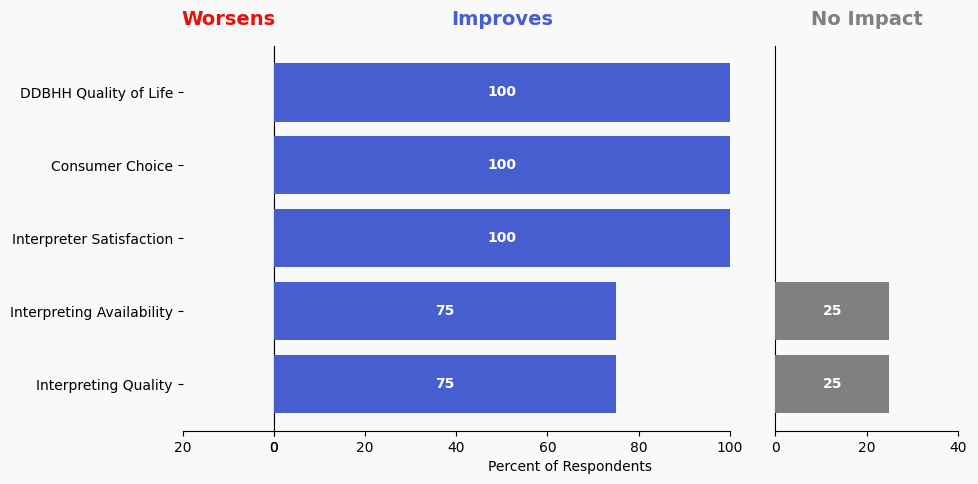90 Develop Policy Standards for ASL Teachers
Issue: Interpreter shortage
Proposed Solution: Coalition, co-led by ASL teachers, Commission and the Minnesota Department of Education, work on legislation to support changes in Minnesota Professional Educator Licensing and Standards Board (PELSB) licensure process for ASL teachers. Coalition to review related and parallel legislation regarding diversifying workforce and heritage language legislation for teachers. For recruiting ASL instructors, emphasize role models that reflect the DDBHH communities and student bodies by having more teachers of color, male teachers and LGBTQIA teachers represented in all ASL education opportunities.
Expected outcome: Greater employability for DDBHH as ASL teachers, increase the flow into the interpreter pipeline and increase the overall number of people who have some familiarity with ASL and Deaf and DeafBlind culture.
Who is impacted: ASL teachers, ASL students, school districts, interpreter training programs.
Timeline: 6 months

Summary of Support Image Description
The stacked bar charts show how respondents rated their level of support and the total number of responses. The percentage for the five support levels is shown from left to right: Strongly Oppose (Dark Red), Oppose (Light Red), Neutral (Yellow), Support (Light Blue), and Strongly Support (Dark Blue).
Respondents may identify with multiple subgroups. The overall level of support is:
Overall
Strongly Oppose: 0%
Oppose: 0%
Neutral: 12%
Support: 34%
Strongly Support: 54%
Click to see the detailed image description for each subgroup.
Interpreter
Strongly Oppose: 0%
Oppose: 0%
Neutral: 12%
Support: 31%
Strongly Support: 56%
DDBHH Consumer
Strongly Oppose: 0%
Oppose: 0%
Neutral: 11%
Support: 37%
Strongly Support: 52%
System Stakeholder
Strongly Oppose: 0%
Oppose: 0%
Neutral: 15%
Support: 44%
Strongly Support: 41%
Overview of Respondents Opting for In-Depth Solution Analysis
After indicating their support level, 3% of the 115 respondents opted in to further assess whether the solution would worsen or improve on five metrics. Of the opt-in reviewers (4 respondents), 100% supported the solution, 0% were neutral on the solution, and 0% opposed the solution.
The remaining 111 respondents did not opt in to further assess the solution. Of these people, 87% support the solution, 12% were neutral on the solution, and 0% opposed the solution.
Reviewer Evaluation of Solution Effectiveness

Solution Effectiveness Image Description
The stacked bar charts show how respondents assessed the effectiveness of this solution based on five metrics. For each metric, the percentage of respondents is shown from left to right: Worsens (Red), Improves (Blue), No Impact (Gray).
DDBHH Quality of Life
Makes It Worse 0%
Makes It Better 100%
No Impact 0%
Interpreter Satisfaction
Makes It Worse 0%
Makes It Better 100%
No Impact 0%
Consumer Choice
Makes It Worse 0%
Makes It Better 100%
No Impact 0%
Interpreting Availability
Makes It Worse 0%
Makes It Better 75%
No Impact 25%
Interpreting Quality
Makes It Worse 0%
Makes It Better 75%
No Impact 25%
Reviewer Feedback and Insights
Interpreter
One comment from Interpreters supports the need for a clear outline of ASL teacher qualifications for HR departments.
Deaf, DeafBlind, Hard of Hearing
One comment from DDBHH Consumers emphasizes the need for school district Human Resources departments to have a fact sheet outlining what a qualified ASL teacher should look like. Another comment questions the terminology of “policy” standards for ASL, suggesting that HR departments need to involve ASL experts to ensure they hire qualified teachers rather than assuming proficiency based on claims.
System Stakeholder
One comment from a System stakeholder suggests coordination between institutions, such as St. Kate’s, and other entities visiting ASL departments statewide to avoid duplicate efforts.
PREVIOUS SOLUTION
89 Develop a Tool Kit for School Districts to Establish ASL Classes
Issue: Interpreter shortage
NEXT SOLUTION
91 Recruit Interpreter Training Program (ITP) Students from High School ASL Classes
Issue: We need more interpreting students to enroll in ITPs to replace the interpreters who are leaving the field.
Leave a Reply